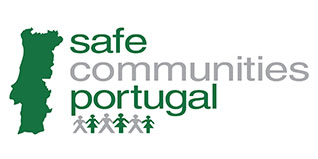The performance of firefighters in the Algarve Castro Marim fire questioned by some affected residents
The role of firefighters in the Castro Marim fire, which broke out on August 16, is questioned by some populations, but the Civil Protection guarantees that the plan prepared allowed it to be controlled even with adverse weather conditions.
Inhabitants of Cortelha, Pisa of Barro de Cima or Pego dos Negros in the municipality of Casto Marim, in the Algarve, complain to Lusa that they were not supported by the firefighters, either because they did not respond to direct appeals or because they showed up too late.
Manuel Pereira, accuses the firefighters of “little or nothing having done” in Cortelha and claims that there were 12 fire engines in a square “just over 100 meters away” and “let this house burn”, he told Lusa on the day the fire was reported to have been extinguished as it pointed towards the dwelling.
“They scored zero and I was here at the time. They were lying in the cars. Everything was on fire, taken by the flames”, he advanced, referring that they replied that “they had no order to go out”.
In Pisa, Barro de Cima and Pego do Negros are accused of not having appeared or having only done so “hours after the fire had passed”, as an inhabitant revealed to Lusa.
“We called the fire department and nobody showed up, the fire arrived at eight in the evening and the first [fire brigade] car at one in the morning. They were standing down there and did nothing. The guys asked for help and they said they had no order to put out the fire”, says Ricardo Neves.
Contacted by Lusa, the Regional Commander of the Algarve of the National Emergency and Civil Protection Authority says he does not comment on specific cases he does not know about, but accepts the criticisms and requests that they be sent to him so that they can “analyse and find out why people weren’t there”.
Vítor Vaz Pinto classifies fire-fighting as “exceptional”, since it was controlled without a window of opportunity “from a meteorological point of view” and the effort was “all directed to safeguarding “people, their property and the environment”.
“I regret the loss that people have had, the work of a lifetime, sometimes generations, that they lose from one moment to the next, but they have to realize that it is not possible to have a firefighter next to every tree, a GNR soldier next to each house and a helicopter in each parish”, he assumes.
The person in charge also wanted to clarify that, “contrary to what was said”, when the fire was considered to be under control, in the middle of the morning of the 16th, no means were withdrawn, but rather “differentiated means were projected”.
“Before there was reactivation, it was when heavy air means came out”, he emphasizes.
Explaining that a fire is considered dominated when “its progression is stopped”, he adds that this does not mean that there cannot be reactivations, as in this case, where there were “six reactivations”.
“Five were promptly defeated by the means that were in place and the sixth one was not possible because, when it occurs, it is out of combat capacity and it coincided at a time when there were no air resources in the theatre of operations to stop its progression”, sustains.
The commander also clarifies that the strategy to fight this fire was to “stop the progression of the fire head” as soon as there was a physical window on the ground that would give “security to the means and resources to be able to act”.
At the same time, they sought to “support the two flanks with 15 kilometres each, because otherwise the fire would reach 29,000 hectares”, he warns.
It is then up to each level – strategic, tactical and manoeuvre – to implement this plan on the ground, fulfilling the mission entrusted to it “in the way it sees fit”.
“People sometimes think that the Relief Operations Commander is the one who gives direct orders to the firefighter to open or close the hose, that’s not what happens,” he concludes.
The fire broke out at 01:05 on the 16th of August, was considered to be under control at 10:20, but it ended up reactivating around 16:00 and was only re-suppressed one day later, in the afternoon of the 17th.
According to the Copernicus Emergency Management Service of the European Union (EU), the fire caused a total of 5,957 hectares of burnt area (2,774 hectares of agricultural areas) in the municipalities of Castro Marim, Vila Real de Santo António and Tavira, in the Algarve, with the autarchies carrying out a full survey of the damages.
(Source: Postal do Algarve)
